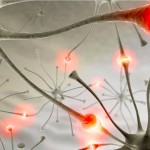 Compassion is not a relationship between the healer and the wounded. It’s a relationship between equals. Only when we know our own pain and have worked to heal ourselves, can we be present with the pain of others and help them discover how they may allow healing and love for themselves. Compassion becomes real when we recognize our shared humanity and have a way of opening our heart so that we can open another.
Compassion is not a relationship between the healer and the wounded. It’s a relationship between equals. Only when we know our own pain and have worked to heal ourselves, can we be present with the pain of others and help them discover how they may allow healing and love for themselves. Compassion becomes real when we recognize our shared humanity and have a way of opening our heart so that we can open another.
Exercise Seven:
This exercise requires at least two people.
Part One:
Please take off one of your shoes and place in your shoe, where your foot hits the ground when you run, a small rock about the size of a pea.
The rock should be between your big toe and the arch of your foot in your shoe so when you stand it is uncomfortable but not painful.
Please ask the person helping you do the exercise, to experience a range of emotions. Ask the person helping you to feel the various emotions deeply.
Tell the person to focus on feeling the emotions more and not focus on expressing or acting the emotions out. This should take around five minutes.
After you are done with the exercise, you should both write the emotions you remember down and see if your lists resemble each other.
Intermission:
Take a small break so your foot is not hurting too much before starting again.
Part Two:
Place the small rock in the same place, in your shoe again.
This time take a few minutes to mask the pain from the rock as much as possible. You can do a meditation, N.L.P., positive affirmation… if you can, put the feeling of discomfort or pain from the rock out of your mind.
Do not place the rock in a more comfortable position, just try not to feel the rock.
This time make sure as best you can, not to let anyone know you have discomfort from a rock in your shoe.
Again have someone experience a range of emotions focusing on the feelings the emotions create in them and not focus on the expression of the emotions. Continue to conceal the pain of the rock, while the person is experiencing their emotions.
After about five minutes, both of you write down the feelings you remember the person having and compare lists.
Conclusion:
Compare your memory of the person’s emotions when you experienced your own pain and their emotions, versus your experience of their emotions when you were trying not to feel your own pain.
Empathy is begun in our body in a physical way and is related to us by our mirror cells. Mirror cells create a similar situation in our body, when we see someone’s body language and facial expressions.
This is why people can watch sports or dance and learn them and even grow stronger just watching others.
We actually feel how someone else feels, “in our own body” because of our mirror cells….”as long as we are feeling.”
If we are hiding our own pain or have become numb to our own feelings, we are much less in touch with our own experience of our own mirror cells.
Because of the lack of sensitivity to our own feelings, we have the same lack of sensitivity to other’s feelings as well.
Of course the best thing of all, if we want to feel another person’s emotions deeply, would be for us to remove the rock from our shoe.
Removing our pain, is quite different than masking our pain. I will continue explaining how much difference masking and removing our pain will make for us, in the next blog. <3




